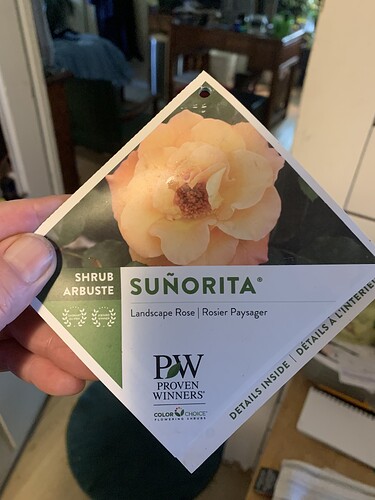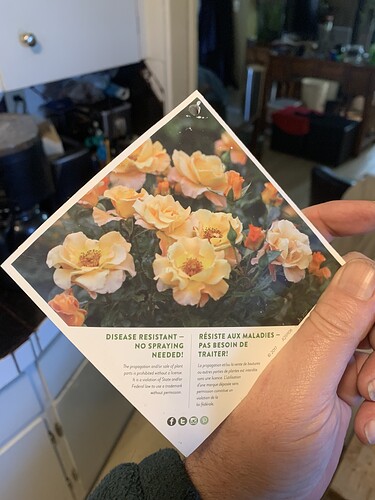So here it is almost July 1 and I think I may have a plan. Our wretched cold spring with repeated frosts, followed by sudden heat led to some odd replanning. Or non-planning, and certainly some unplanning.
Might I suggest to mnemko that my 13-1 is worth consideration. Here’s why. It came out of a cross of Orange surprise x First impression. Orsup was a cross of PS (Carefree Beauty x RiseNShine) x Carefree Copper ( Carefree Beauty x Austrian copper). I’ve had it going since early 2013. It blooms when very small, as does Orsup. It is quite double, very dark yellow nearly no fade under our intense sun, even at 100+ day after day. I used it just a little as a mother plant last year right into the hot season and got a reasonable set of hips. Not many seeds per hip as there are few stigmas to pollinate. Seeds germinate. Potted into 5-7 inch pots it survived below 0 F plunged to the rim into the ground, with some leaf cover. As expected there was some freeze back on some pots, depending if the leaves got blown off before our -10 nights. But still, I have several pots that had many early blooms and still have many, despite setting a good many hips.
This year I did a lot of pollen sprinkling. I used R pomifera and Above and Beyond( both from D. Zlesak), and a large once-blooming shrub that came from a cross years ago of Carefree Beauty x Carefree Copper and now labeled 1100 (really a guess as to year) which is totally self-sterile and hasn’t yet accepted a pollen I’ve tried from whatever else in in bloom early. I tried their pollen on anything that was awake. Now I have hips from some really odd combinations. I just went out and checked that 13-1 has hips from A & B, 1100, Carefree Sunshine, Rainbow KO and my 13-2 (Golden Slippers x RKO) plus a few others. All of those avoid BS in my climate even when planted right next to Golden Slippers. Coronado and other BS magnets.
Bob Byrnes has used 13-1 I think. So far I’ve not seen disease on it. It might get mildew if you are prone to that but in a mildewy year last year I saw none. So far none of my plants have exceeded 10 inches. Of course it roots like a weed. I will start some cuttings when I can find some shoots with no hip on them. No doubt some if I look.
If anyone is interested in 13-1, let me know at ksu.edu where I am one of the early email adopters so I use my first name initial combined with my last name all lower case. If you can’t figure that out, send a PM. I think my name is Larry Davis on the list.
My overall plan is a repeat-blooming yellow shrub that gets no disease in this climate and is reasonably cold-hardy. With luck some products will be quite hardy as I work with some very northern parents. With more luck they may resist diseases in other climates too. (So far so good on that front). Breaking the linkage of BS to yellow is a challenge. 13-1 may be getting there. I know that Julia Child, Gold Struck, Garden Sun and other large-flowered double, strong yellows do not. CArefree Sunshine is as close as any so far.
I live on the by-products, things that meet most criteria except color. I keep trying.
![]()

